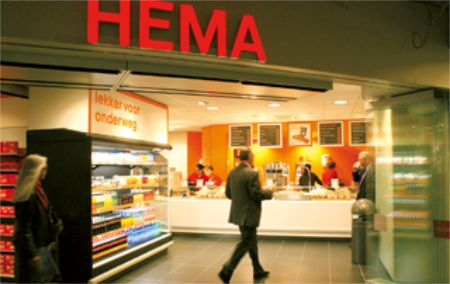Fast Fashion Dutch style

![]()
Recently I was fascinated by the splendid documentary about Hema, a highly successful Dutch retailer, in which CEO Ronald van Zetten was closely followed during a full year. It shows a great example of leadership, this time with supply chain management at the centre of attention. Fast fashion to be exact.
The documentary starts with an unsuspecting designer of womenswear. Bent over next year’s summer collection, she carefully assesses whether each individual item fits with the Hema feeling. Is it sufficiently uncomplicated and really Dutch? Whether the designs are really fashionable is not all that important to her. Customers who are interested in the latest fashion will have to do their shopping somewhere else. The fact that her collection will only be in the shelves in 38 weeks time does not appear to bother her either. Hema is different and unique.
Soon it becomes clear though that van Zetten has a totally different vision. If Hema wants to survive in the long term, it will have to buy cheaper. To be able to buy cheaper, it will have to buy bigger volumes. And to be able to buy bigger volumes, it will have to sell more. And to be able to sell more, it will have to follow the latest fashion and possibly even create it. No time to market of 38 weeks anymore, but six to eight, just like Zara. No longer four collections per year, but something new every week.
To the astonishment of his supplier, Ronald van Zetten traveled to China himself to ask him, under the guise of fast fashion, to drastically reduce his lead time. The supplier’s giggly reaction could not particularly impress van Zetten and a few minutes later he had decided to terminate the long relationship with his Chinese fashion supplier. Hema’s fashion will have to come from Turkey from now on. Faster and at a much higher frequency. Fast fashion! To the dismay of the aforementioned designer of womenswear. Her work of the past many months and even worse, her image of what the Hema stands for, can both be thrown into the trash bin.
Van Zetten in the meantime powers on. The reason some becomes clear to the viewer. Gradually he is able to get ever more Hema employees on his thundering train. In the end even his chief designer. So far so good.
Halfway through the documentary however, van Zetten makes a remarkable statement. “The lead time is not driven by production but by something else”. What he does not say however is what this something is. Let alone what is causing it. Of course, transport from Turkey takes less time. Instead of five weeks at sea, it now takes three days by road from Turkey. But this by no means can explain the difference between 38 weeks and six to eight. There must be more.
Having seen the documentary, I think and hope that van Zetten knows the secret. Managing variability or more specifically, managing variability in demand, processes and flow. If Hema does not manage variability, the variability will manage Hema. The consequence: long and unreliable lead times against high costs. In order to make a fundamental step, Hema will have to manage the increasing variability. At least as good as Zara and better than the rest. That is the true meaning of fast fashion!


